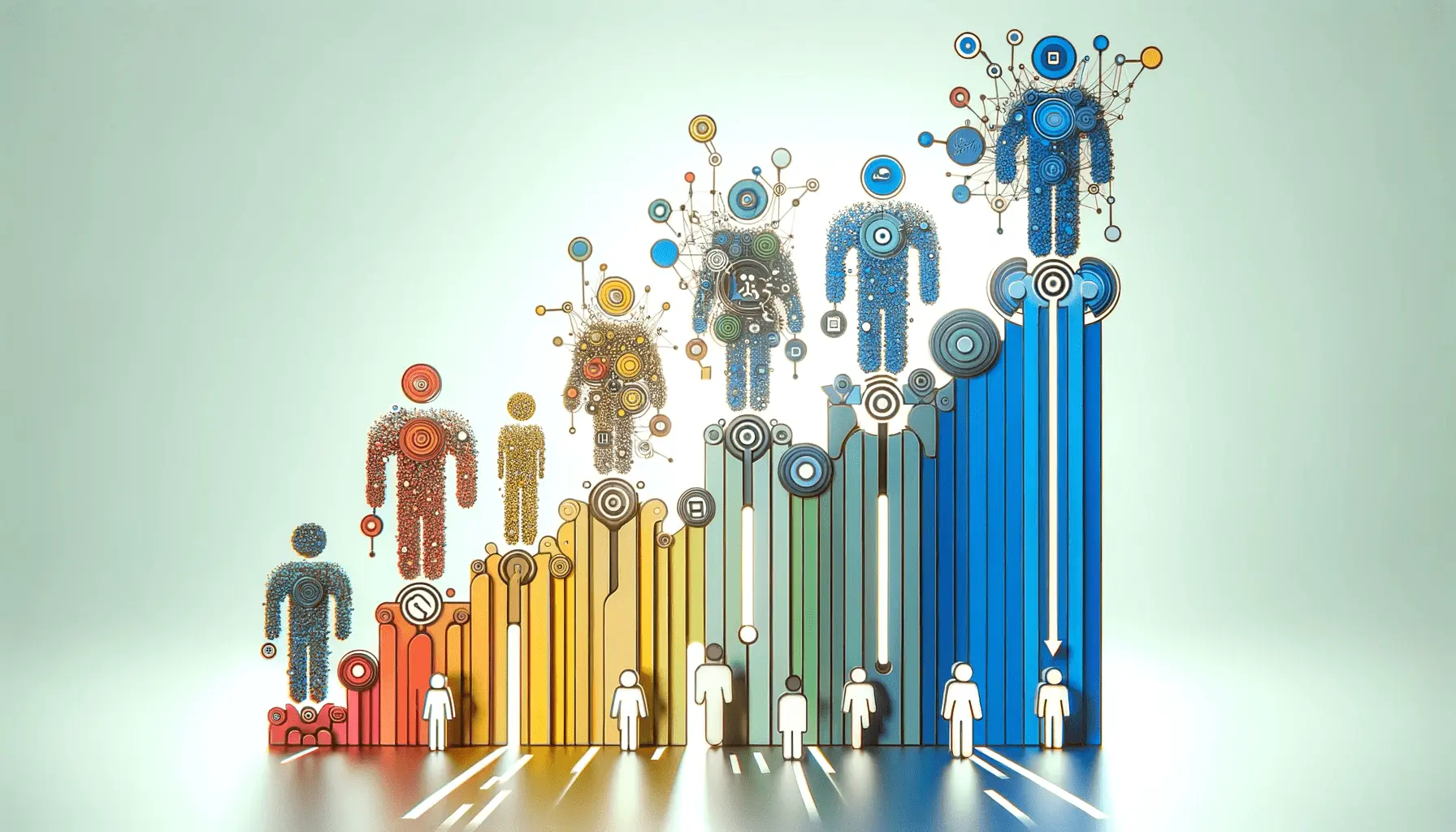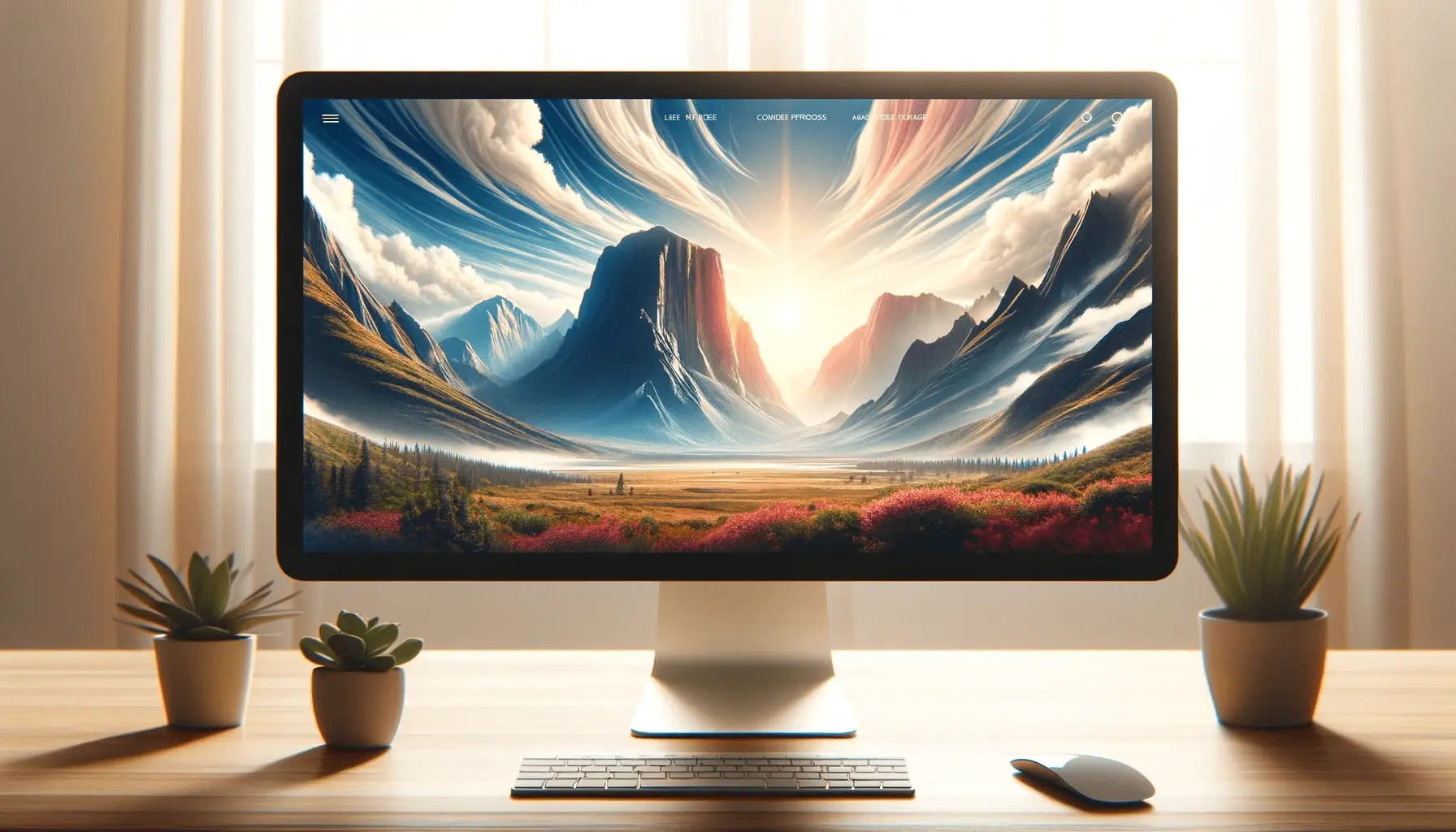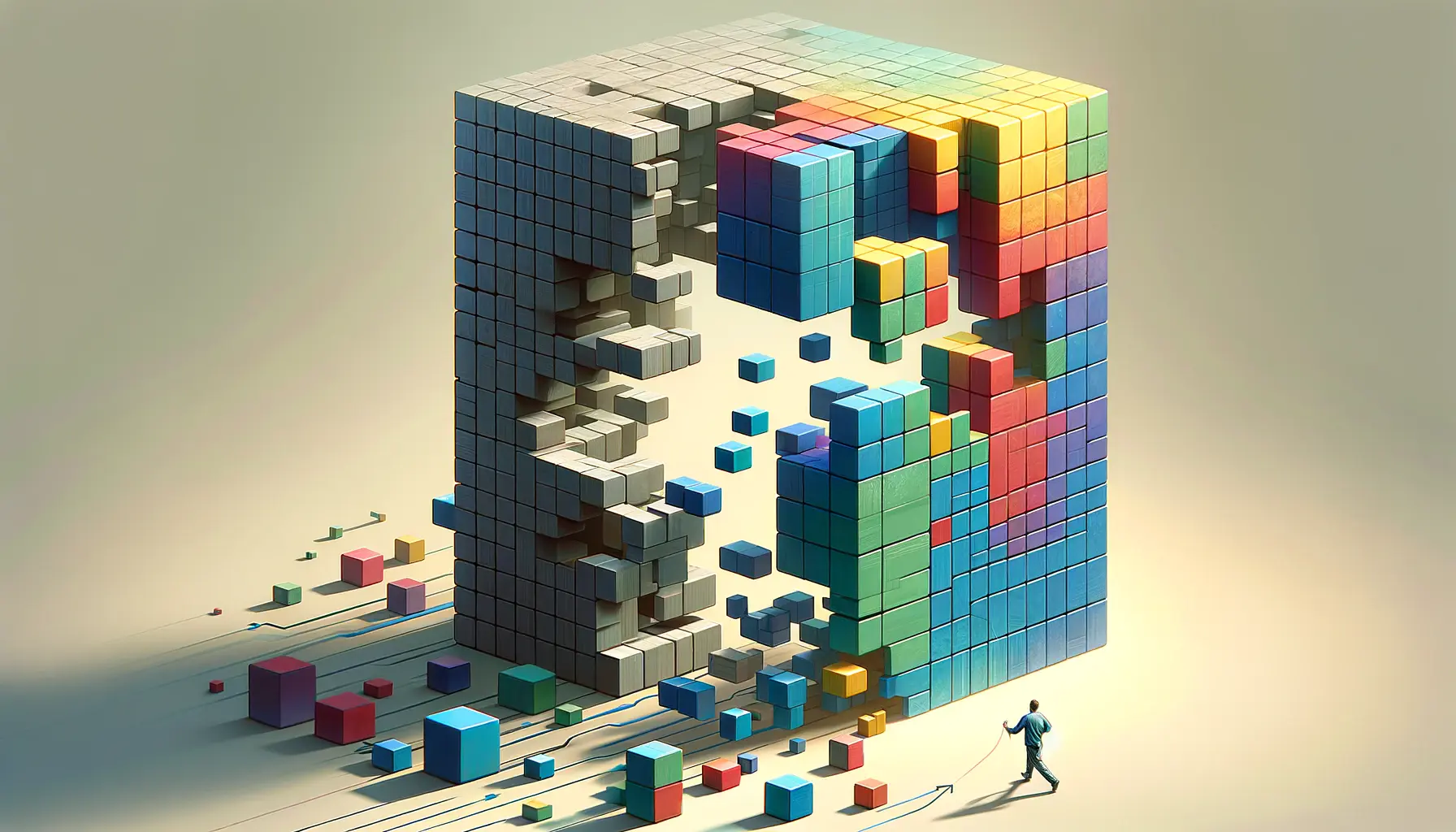The advent of Sora by OpenAI marks a significant milestone in the evolution of artificial intelligence applications in the realm of video production and editing.
This cutting-edge technology, designed to generate high-quality video content from textual prompts, has opened new avenues for creativity and efficiency in large-scale video projects.
The scalability of Sora, its main attribute, promises to revolutionize how filmmakers, content creators, and businesses approach video production, offering unprecedented levels of flexibility and innovation.
At its core, Sora’s scalability lies in its ability to handle diverse and complex video generation tasks with ease, adapting to various project sizes and requirements.
This flexibility makes it an invaluable tool for industries looking to produce video content at scale, from marketing and advertising to entertainment and education.
By leveraging Sora, creators can significantly reduce production times, lower costs, and enhance the creative process, making it possible to bring more ambitious projects to life.
- Understanding Sora’s Technology
- Scalability and Its Impact on Video Production
- Challenges and Solutions in Scaling Video Projects
- Integrating Sora into Existing Video Production Workflows
- Future Trends in AI-Driven Video Production
- Maximizing Creativity with Sora
- Strategies for Effective Use of Sora in Video Projects
- Embracing the Future with Sora
- FAQs on Scalability of Sora in Video Production
Understanding Sora’s Technology
How Sora Works
Sora operates on a sophisticated AI model that transforms textual descriptions into vivid, dynamic video content.
This process involves a deep understanding of language, context, and visual storytelling, allowing Sora to interpret prompts and generate videos that closely align with the creator’s vision.
The technology behind Sora incorporates advanced machine learning algorithms, including generative adversarial networks (GANs) and diffusion models, to produce realistic and engaging videos.
The model’s ability to process and visualize complex scenarios from simple text inputs is a testament to its potential in streamlining video production workflows.
By inputting a detailed description of the desired scene, creators can witness the transformation of their ideas into high-quality video content, complete with nuanced details and dynamic elements that bring the narrative to life.
Key Features of Sora
Sora’s architecture is designed to support a wide range of video production tasks, making it a versatile tool for creators across different domains.
One of its standout features is the high fidelity of the generated videos, which can achieve resolutions suitable for professional use.
Additionally, Sora supports various aspect ratios and frame rates, providing flexibility for different distribution platforms and content types.
Another significant aspect of Sora’s technology is its iterative refinement process.
Creators can fine-tune their prompts and collaborate with the AI to achieve the desired outcome, ensuring that the final product aligns with their creative vision.
This iterative approach, combined with Sora’s rapid processing capabilities, enables efficient production cycles and fosters a more creative exploration of video content.
Sora’s scalability and advanced AI technology offer a transformative approach to video production, enabling creators to realize their visions with unprecedented efficiency and flexibility.
Scalability and Its Impact on Video Production
The concept of scalability, especially in the context of Sora, extends far beyond mere technical capabilities.
It encompasses the ability to efficiently manage and execute large-scale video projects that would otherwise require significant human and financial resources.
This section delves into how Sora’s scalability influences various aspects of video production, from conceptualization to final output, and its broader implications for the industry.
Scalability in video production refers to the capacity to handle increasing workloads or to expand the scope of projects without compromising on quality or efficiency.
Sora’s AI-driven platform exemplifies this by enabling creators to produce a wide range of video content, from short clips to extensive video sequences, with ease and precision.
The following points highlight the key areas where Sora’s scalability makes a profound impact:
- Efficiency in Production: Sora significantly reduces the time and effort required to produce high-quality video content. By automating the generation of complex scenes and visual effects, it allows teams to focus on creative direction and storytelling.
- Cost Reduction: Traditional video production can be costly, involving expenses for sets, actors, and post-production. Sora’s ability to generate realistic video content digitally helps minimize these costs, making high-quality video production more accessible.
- Enhanced Creativity: With Sora, creators are no longer constrained by budgetary limitations or logistical challenges. This freedom enables them to explore more ambitious and creative ideas, pushing the boundaries of what’s possible in video content.
- Adaptability to Various Formats: Sora’s versatility in supporting different video formats and aspect ratios makes it suitable for a wide array of platforms, from traditional broadcast to social media channels, ensuring content is optimized for its intended audience.
The scalability of Sora not only streamlines the production process but also democratizes video creation, offering both seasoned professionals and aspiring creators the tools to bring their visions to life.
This shift has the potential to foster a new era of innovation and diversity in video content, as more creators gain access to powerful production capabilities.
The scalability of Sora represents a paradigm shift in video production, empowering creators with the tools to efficiently produce diverse and innovative content at scale.
Challenges and Solutions in Scaling Video Projects
While the scalability of Sora presents numerous opportunities for enhancing video production, it also introduces a set of challenges that creators must navigate.
These challenges stem from the inherent complexities of managing large-scale projects and the need to maintain a high standard of quality across all aspects of production.
However, with every challenge comes a solution, and Sora provides the tools and features necessary to address these issues effectively.
Managing Complexity in Large Projects
One of the primary challenges in scaling video projects is managing the increased complexity that comes with larger scopes.
This includes coordinating multiple scenes, ensuring consistency in visual style, and integrating various elements seamlessly.
Sora’s AI-driven approach offers a solution by automating many of the tasks that contribute to this complexity, such as scene generation and visual effects integration.
By streamlining these processes, Sora allows creators to focus on the creative aspects of their projects, reducing the burden of technical execution.
Maintaining Quality and Consistency
As projects scale, maintaining a uniform standard of quality and consistency across all content becomes increasingly difficult.
Variations in visual style, narrative coherence, and overall production value can detract from the viewer’s experience.
Sora addresses this challenge through its advanced learning algorithms, which ensure that the generated content adheres to the specified parameters and style guides.
Additionally, the iterative nature of working with Sora enables creators to refine their outputs continuously until the desired level of quality and consistency is achieved.
Adapting to Diverse Content Requirements
Large-scale video projects often require content that caters to diverse audiences and platforms, each with its own set of requirements and expectations.
Sora’s versatility in generating content for various formats and aspect ratios makes it an invaluable tool in this regard.
Creators can leverage Sora to produce content that is not only scalable in quantity but also adaptable to the specific needs of different distribution channels, ensuring broad appeal and engagement.
- Efficient workflow management tools within Sora help organize and prioritize tasks, simplifying project coordination.
- Customizable templates and style presets allow for easy replication of desired aesthetics, ensuring visual consistency.
- Detailed analytics and feedback mechanisms provide insights into content performance, guiding iterative improvements.
Sora’s comprehensive suite of features offers practical solutions to the challenges of scaling video projects, ensuring that creators can maintain quality, consistency, and adaptability regardless of project size.
Integrating Sora into Existing Video Production Workflows
The integration of Sora into existing video production workflows represents a significant shift in how content is created and managed.
This transition, while offering numerous benefits, requires careful planning and adaptation to ensure that it complements traditional processes rather than disrupting them.
The goal is to harness Sora’s capabilities to enhance efficiency and creativity while retaining the core strengths of conventional video production methods.
Seamless Workflow Integration
To effectively integrate Sora into existing workflows, it’s crucial to identify the stages of production where it can add the most value.
For pre-production, Sora can assist in visualizing concepts and storyboards, providing a clearer picture of the final product early in the process.
During production, Sora can generate supplementary content or simulate environments, reducing the need for extensive physical sets or locations.
In post-production, its capabilities can be leveraged for adding visual effects, background enhancements, or even creating entirely new scenes, thereby streamlining the editing process.
Collaboration Between AI and Human Creativity
A key aspect of integrating Sora into video production workflows is fostering a collaborative environment where AI and human creativity complement each other.
While Sora can automate and enhance various production tasks, the creative direction and decision-making should remain in the hands of the creators.
This synergy allows for the exploration of new creative possibilities, with Sora acting as a tool that amplifies the creative vision rather than replacing it.
Training and Skill Development
Adopting new technologies like Sora requires an investment in training and skill development for production teams.
Understanding how to effectively utilize Sora’s features and capabilities is essential for maximizing its potential within existing workflows.
Workshops, tutorials, and ongoing learning opportunities can help teams become proficient in working with AI-driven tools, ensuring a smooth transition and fostering innovation in content creation.
- Identify specific use cases within your workflow where Sora can provide the most benefit.
- Develop a strategy for integrating Sora that includes training, pilot projects, and feedback loops.
- Encourage collaboration between creative and technical team members to explore the full potential of Sora.
Effective integration of Sora into video production workflows enhances both the efficiency and creativity of content creation, paving the way for innovative storytelling and visual experiences.
Future Trends in AI-Driven Video Production
The landscape of video production is undergoing a transformative shift with the advent of AI technologies like Sora.
This evolution is not just about the automation of tasks but also about opening new creative horizons and redefining the possibilities within the domain of video content creation.
As we look to the future, several trends are emerging that highlight the growing impact of AI on the industry.
Personalization and Interactive Content
One of the most significant trends is the move towards highly personalized and interactive video content.
AI-driven tools like Sora enable the creation of videos that can adapt to the preferences and behaviors of individual viewers, offering a more engaging and tailored viewing experience.
This could revolutionize marketing and educational content, making it more effective by aligning closely with the viewer’s interests and learning styles.
Enhanced Realism and Creative Possibilities
As AI technologies continue to advance, we can expect to see a leap in the realism and creative scope of generated video content.
Sora and similar platforms will become capable of producing videos that are increasingly indistinguishable from those shot with traditional methods, while also providing creators with the tools to explore fantastical, imaginative scenarios that would be impractical or impossible to film in reality.
Democratization of Video Production
AI-driven video production is set to democratize the field, lowering the barriers to entry for aspiring creators.
With tools like Sora, individuals and small teams will have access to production capabilities that were previously only available to large studios with significant resources.
This trend is likely to spur innovation and diversity in video content, as more creators from various backgrounds and with different perspectives are able to share their stories.
- Investment in AI research and development will continue to grow, leading to more sophisticated and versatile video production tools.
- Collaboration between AI developers and creative professionals will deepen, ensuring that AI tools evolve in ways that truly benefit the video production industry.
- Regulatory and ethical frameworks surrounding the use of AI in video production will become more refined, addressing concerns such as copyright, privacy, and the authenticity of generated content.
The future of AI-driven video production promises not only greater efficiency and flexibility but also the opening of new creative frontiers, making this an exciting time for creators and audiences alike.
Maximizing Creativity with Sora
The introduction of Sora into the video production landscape offers an unparalleled opportunity to enhance creativity and push the boundaries of traditional content creation.
By harnessing the power of AI, creators can explore new narrative possibilities, experiment with visual styles, and produce content that was previously unimaginable.
Maximizing creativity with Sora involves leveraging its capabilities to complement and amplify the human creative process.
Exploring New Narrative Possibilities
Sora enables creators to experiment with complex narratives and storylines that would be challenging to realize through conventional means.
By generating detailed scenes and environments from textual descriptions, Sora allows storytellers to visualize and refine their ideas in real-time.
This immediate feedback loop can inspire new directions in storytelling, encouraging creators to explore innovative narrative structures and themes.
Experimenting with Visual Styles
With Sora, the ability to experiment with a wide range of visual styles is at the fingertips of every creator.
Whether aiming for hyper-realistic visuals or unique, stylized representations, Sora can adapt to the creator’s vision.
This flexibility supports creative experimentation, enabling directors and designers to find the perfect visual language for their stories without the constraints of traditional production methods.
Collaborative Creativity
The collaborative potential between AI and human creators is a cornerstone of maximizing creativity with Sora.
By viewing Sora as a creative partner, teams can blend AI-generated content with human insight and expertise, leading to a richer creative output.
This collaboration can take many forms, from using Sora to brainstorm initial concepts to refining final details, ensuring that the technology enhances rather than replaces the human element.
- Utilize Sora to prototype ideas quickly, allowing for rapid iteration and development of concepts.
- Encourage team members to engage with Sora, fostering a culture of innovation and experimentation.
- Stay informed about updates and new features in Sora, continuously expanding the creative toolkit available for projects.
Embracing Sora as a tool for maximizing creativity opens up a world of possibilities for video production, enabling creators to explore, experiment, and express in ways that were previously beyond reach.
Strategies for Effective Use of Sora in Video Projects
Implementing Sora into video projects requires more than just understanding its technical capabilities; it demands a strategic approach to fully leverage its potential for enhancing production quality and creativity.
Effective use of Sora involves thoughtful planning, collaboration, and a willingness to explore new creative avenues.
Here, we outline strategies that can help creators maximize the benefits of Sora in their video projects.
Strategic Planning and Goal Setting
Before diving into production with Sora, it’s essential to establish clear goals and objectives for its use.
Determine what aspects of the project can benefit most from AI-driven production, whether it’s scene generation, visual effects, or automating repetitive tasks.
Setting specific goals helps focus efforts and ensures that Sora is used where it can make the most significant impact.
Collaborative Ideation and Feedback
Integrating Sora into the creative process should be a collaborative effort involving all members of the production team.
Encourage open ideation sessions where team members can suggest how Sora might be used to solve creative challenges or enhance the project.
Regularly gather feedback on the AI-generated content to ensure it aligns with the project’s vision and quality standards.
Continuous Learning and Adaptation
The capabilities of Sora and similar AI tools are continually evolving, with new features and improvements being introduced regularly.
Stay informed about the latest developments and consider how they can be applied to current and future projects.
Encourage team members to participate in training sessions or workshops to build their skills in working with AI-driven tools.
- Develop a workflow that integrates Sora seamlessly into the production process, from pre-production to post-production.
- Experiment with different prompts and settings in Sora to discover new creative possibilities and optimize results.
- Use Sora to create prototypes or drafts of scenes, which can then be refined and finalized by the creative team.
Assuming that Sora will automatically understand and execute the creative vision without guidance and refinement from the team is a common misconception. Effective use requires active engagement and collaboration.
Embracing the Future with Sora
The journey through the capabilities, challenges, and strategies surrounding the use of Sora in large-scale video projects illuminates a path toward a revolutionary approach in video production.
As we stand on the brink of this new era, it’s clear that Sora’s scalability is not just a technical feature but a gateway to boundless creative possibilities.
The integration of Sora into video production workflows signifies a shift towards more efficient, creative, and personalized content creation, reshaping the landscape of the industry.
The Path Forward
Looking ahead, the trajectory of video production is set to be profoundly influenced by AI technologies like Sora.
The ability to generate high-quality video content from textual prompts opens up unprecedented opportunities for storytelling, visual experimentation, and audience engagement.
As we navigate this transition, the emphasis on strategic planning, collaborative creativity, and continuous learning will be paramount in leveraging Sora’s full potential.
Key Takeaways for Creators
- Adaptability and willingness to explore new technologies are essential for staying relevant in the rapidly evolving video production industry.
- Collaboration between AI and human creativity offers a synergistic approach that can elevate the quality and impact of video content.
- Continuous education and skill development in AI-driven tools will become increasingly important for professionals in the field.
In conclusion, the scalability of Sora for large-scale video projects represents a significant advancement in the realm of video production.
By embracing this technology, creators can unlock new levels of efficiency, creativity, and personalization in their work.
As we move forward, the integration of Sora and similar AI tools into video production workflows will undoubtedly continue to inspire innovation, challenge traditional methodologies, and redefine what is possible in the world of video content creation.
FAQs on Scalability of Sora in Video Production
Explore commonly asked questions about leveraging Sora for scalable video production, providing insights into its capabilities and applications.
Sora is OpenAI’s AI model that transforms text prompts into realistic and imaginative video scenes, revolutionizing video production scalability.
Using advanced AI, Sora interprets text instructions to generate lifelike scenes, leveraging machine learning for high-quality video production.
Yes, Sora’s scalable nature allows it to efficiently manage and produce content for large-scale video projects, enhancing productivity and creativity.
While Sora offers vast creative potential, it raises ethical questions regarding the creation of fictional content, necessitating responsible use.
Yes, Sora utilizes a transformer architecture akin to GPT models, ensuring unparalleled scalability across diverse visual data for video production.
Sora’s generalized, scalable AI model is predicted to disrupt traditional filmmaking, offering new avenues for creativity and efficiency.
Sora can create a wide range of video content, from realistic scenes to imaginative narratives, catering to various production needs.
Sora enhances video editing by automating tasks and scaling video quality, significantly improving sample quality with increased processing.













